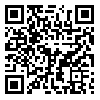BibTeX | RIS | EndNote | Medlars | ProCite | Reference Manager | RefWorks
Send citation to:
URL: http://ppj.phypha.ir/article-1-358-en.html
While the effect of changes of stimulus waveform (quasitrapezoidal and rectangular current pulses) on nerve activation is clear, but there is no evidence on the effect of quasitrapezoidal pulses on ionic currents of cellular membrane. In the present study, the effect of depolarizing quasi-trapezoidal current pulses, in comparison with that of depolarizing rectangular current pulses, on firing behavior of isolated Fl neuron in Helix aspersa was investigated using intracellular recording technique (current clamp). In standard ringer, increasing the intensity of quasi-trapezoidal pulses, in comparison with rectangular pulses, caused a considerable rise of the amplitude and the duration of elicited action potential. The reduction of time constant of fast afterhyperpolarization (fAHP) and post-stimulus hyperpolarization (PSH) after injection of low intensity of quasi-trapezoidal pulses was significantly more than that of rectangular pulses. After elimination of K+ and Na+ currents, a low intensity of quasi-trapezoidal stimulus caused a 12 % decrease in the amplitude of high-threshold Ca2+ spikes. On the other hand, with an increase in the threshold of action potential, the time constant of PSH and reduction in the threshold latency through quasi-trapezoidal pulses was more than rectangular pulses. In the presence of nifedipine (1 mM), no significant differences were observed between the effects of two waveforms of stimulus on firing behavior. The results of this study showed that two waveforms of stimulus have different effects on firing behavior and ionic nonlinear currents in FI neuron. It seems that the quasitrapezoidal pulses, through slowing hyperpolarization of membrane potential can increase the cell excitability.
| Rights and permissions | |
 |
This work is licensed under a Creative Commons Attribution-NonCommercial 4.0 International License. |





